
The following guide is my own experience and is not sponsored by Ikea.
In this guide I would like to show how I have completely renovated my old kitchen and how easy it is to install a new IKEA kitchen. The old kitchen was in really bad shape when I got the apartment so it was differently the top-1 priority to get fixed. Tearing down an old kitchen and installing a new one can for many people seem to be an impossible taske - this was also my first thought. However, if you have a little handyman or handy-woman hidden inside you it can actually be done by yourself.
IKEA kitchen
Because I live in Denmark, I have easily access to an IKEA store. For those who are not familiar with IKEA I will briefly explain the concept. IKEA is originally a Swedish furniture store. However, in the recent years IKEA has invested and expanded, both in its numbers of stores but also in its product range. Today, IKEA is a sort of a multi store where you can buy IKEA televisions, beds, lamps but also complete kitchen solutions. Basically everything you would need for your home. The concept of IKEA is that the quality most be in top and the price low.
Especially, the IKEA kitchens have a good reputation. I think the IKEA kitchens have a great Nordic design and the price is competitive with other kitchen companies. Therefore, I quickly decided to buy an IKEA kitchen. In the following pages, I will show how easy it is to design your own kitchen, purchase it and then install it. The process of designing and installing your new kitchen can roughly be divided into four main steps.
1. Design your Dream Kitchen Online
Before I went to an IKEA store I started online where I used the simple 3D design tool, developed by IKEA, to stick together all the many different parts of my kitchen. I especially liked this part because it was so easy to sit quietly at home and design my own personal kitchen. I saved my kitchen design on my online profile and then I went to my local IKEA store.

2. IKEA Kitchen Experts
At the IKEA store, you get to sit together with an IKEA kitchen sales expert. This person will look at your design and make sure everything is correct and that you have included all the parts that are needed to assembly the kitchen. Especially, all the small screws, supports and cover plates tend to be forgotten.

3. Purchase and Home Transport
When you have designed, and have it looked over by an IKEA sales person, then you are ready to go and pick up all the parts for your new kitchen. I have highlighted this step because I thought it was a very good experience. From the IKEA sales person you get a print out with the complete list of things that you need to go to the warehouse and pick up yourselves. And of course the list is made in the exact way the items are located in the warehouse so that you only have to go from one end towards the checkout counter. I think that is a small but very clever detail.
When you have collected and purchased all the parts, then you need to transport everything back to your home. I used my own large car. However, if you have a small car you can, of course, get help from IKEA. They can arrange the transportation for an extra fee.
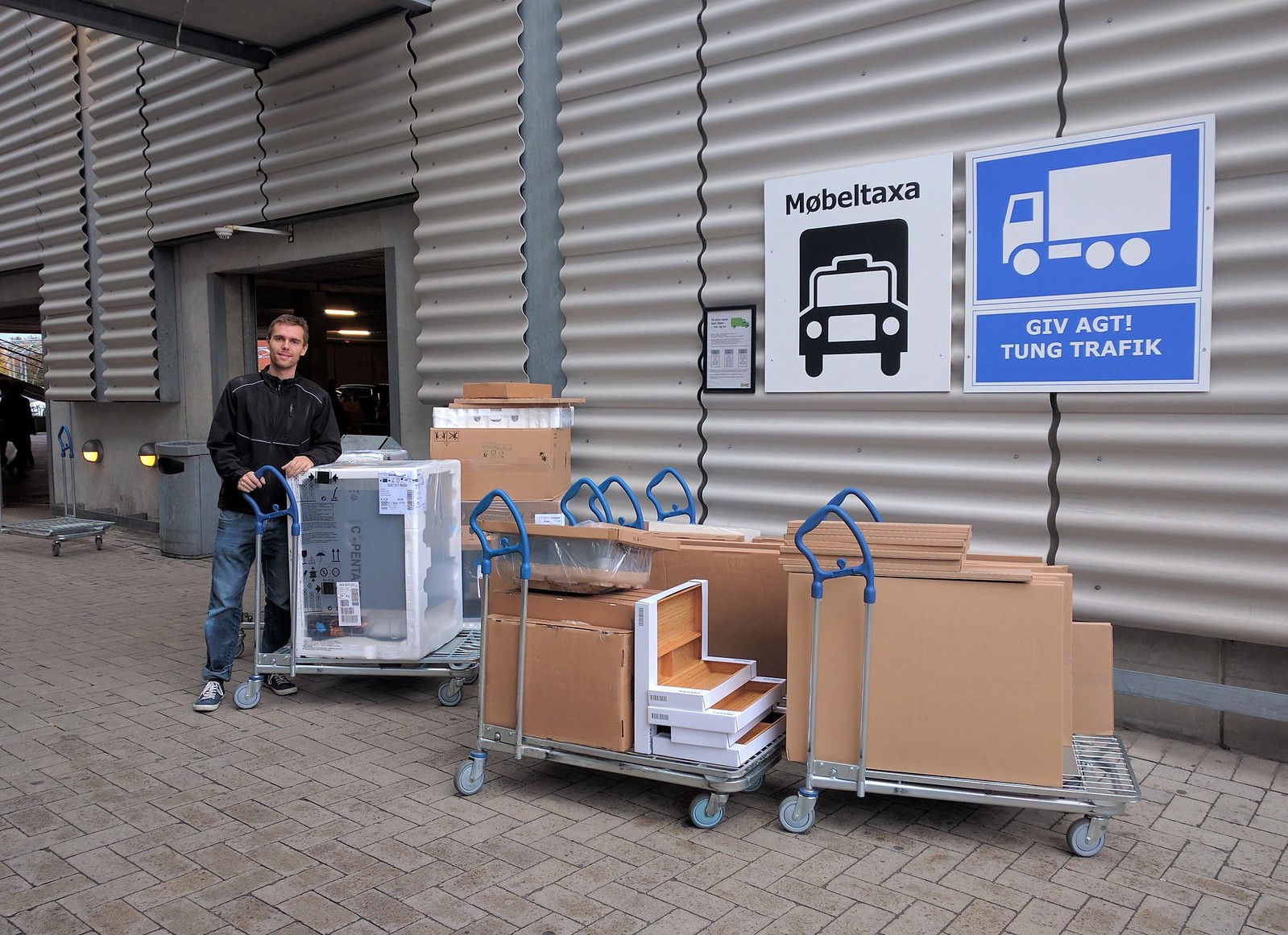
4. Installation of the Kitchen
This step is the fun but also the most technical part. Once your new kitchen is still in its cardboard boxes, laying in your living room or garage, then it is time to prepare your kitchen room for the new kitchen. In my case, my old kitchen including the ceiling, electrical wiring, walls and floor was in such a bad shape that everything had to be stripped away and repaired. That you might need professional help for this step. I am an engineer with a background as a carpenter so of course I did everything myself except the electric part which would be against the Danish law.

Quality of the IKEA Kitchen
I would like give a few comments about the quality of the material and electrical appliances from the IKEA brand. Starting with the kitchen itself, meaning the drawers, cabinets and so on. The quality here is actually good. It is very easy to assemble - all the screw holes, assembly lines, connection pins and so on fits perfectly and everything clicks/fits nicely together. However when that said, I it also my opinion that in general the kitchen has a 'cheaper' feeling if that is the right word to use. Everything is working quite well but it is just not the top quality. However, I would also say that the quality is good enough for the majority of all people and I guess that is the kind of quality IKEA is designing its products for. Compared to my old kitchen which was hand crafted by a kitchen company, this IKEA kitchen is of course not the best.
Quality of the Electrical Appliances
As said above I think in general that the kitchen itself is in an acceptable quality. However, when it comes to the electrical appliances I think the quality is just a bit too low. For my kitchen I purchased the oven, the induction hotplate, the freezer and the refrigerator directly from IKEA. All the appliances I bought was from the cheaper end of IKEAs product range and maybe you just get what you pay. I personally think the electrical appliances, I bought from IKEA, is of a too low quality - all of it works but the quality-feeling is just too low, I think. Especially, the induction hotplate has a loud pitching noise when it is running. I went to IKEA with my problem but they just told me - that was normal for the low-priced products. It is also my experience it has problems detecting the pots and pans. The same applies to the oven, it works but the quality feeling is scoring minimum points on my scoreboard. The refrigerator and freezer is OK I think.
Overall my recommendation would be to purchase the electrical appliances from a different place than IKEA if you are looking for a higher quality. Just keep in mind some of the appliances only fits an IKEA kitchen like the dishwasher. Make sure to investigate on this issue before purchasing. However, the kitchen itself is acceptable.

Hiding the Electrical Cables
Before I installed my kitchen, I decided to hide the electrical cables inside the walls. This way I have been able to make a nice finish where the wall sockets are installed. Hiding the electrical cables in the wall is actually easy. I just cut grooves in the walls where the cables and the wall sockets would be. Then an electrician made all the wiring of then cables and then I covered the cables with a wall filling material. I finished off with a layer of wallpaper and then white kitchen paint with a relatively high gloss. This way it is easier to wash and clean the walls when they become dirty from all the cooking you are going to do.

Repairing the Walls
When I removed the old kitchen, I also had to take down the old tiles. This made the walls stand back in a very bad condition. After I had cut the grooves in the walls for the cables, I repaired all the wall with a filling concrete material. I finished off with a layer of wallpaper and some white paint, as I have described above.

Cleaning and Treating the Floor
The floor also had to be repaired. The removed the old laminate floor tiles, which revealed the original wooden floor. Then I sanded the floor and treated it with lye and oil. I have made a separate guide on how to do this. You can find this guide on my blog by using the search function.

Installing LED Down Lights
When I was in the process of repairing my entire kitchen, I also decided to lower the ceiling and installing some LED down lights. I personally think this type of lighting is a fantastic way of getting some good lights in a room. The electrical cables and the installation in general are nicely hidden on top of the ceiling. Furthermore, the energy consumption of an LED bulb is much lower compared to regular light bulbs. I think the way of lowering the ceiling and installing down lights is such a great idea that I have decided to make a separate guidepost about this topic. You can find this guide on my blog.


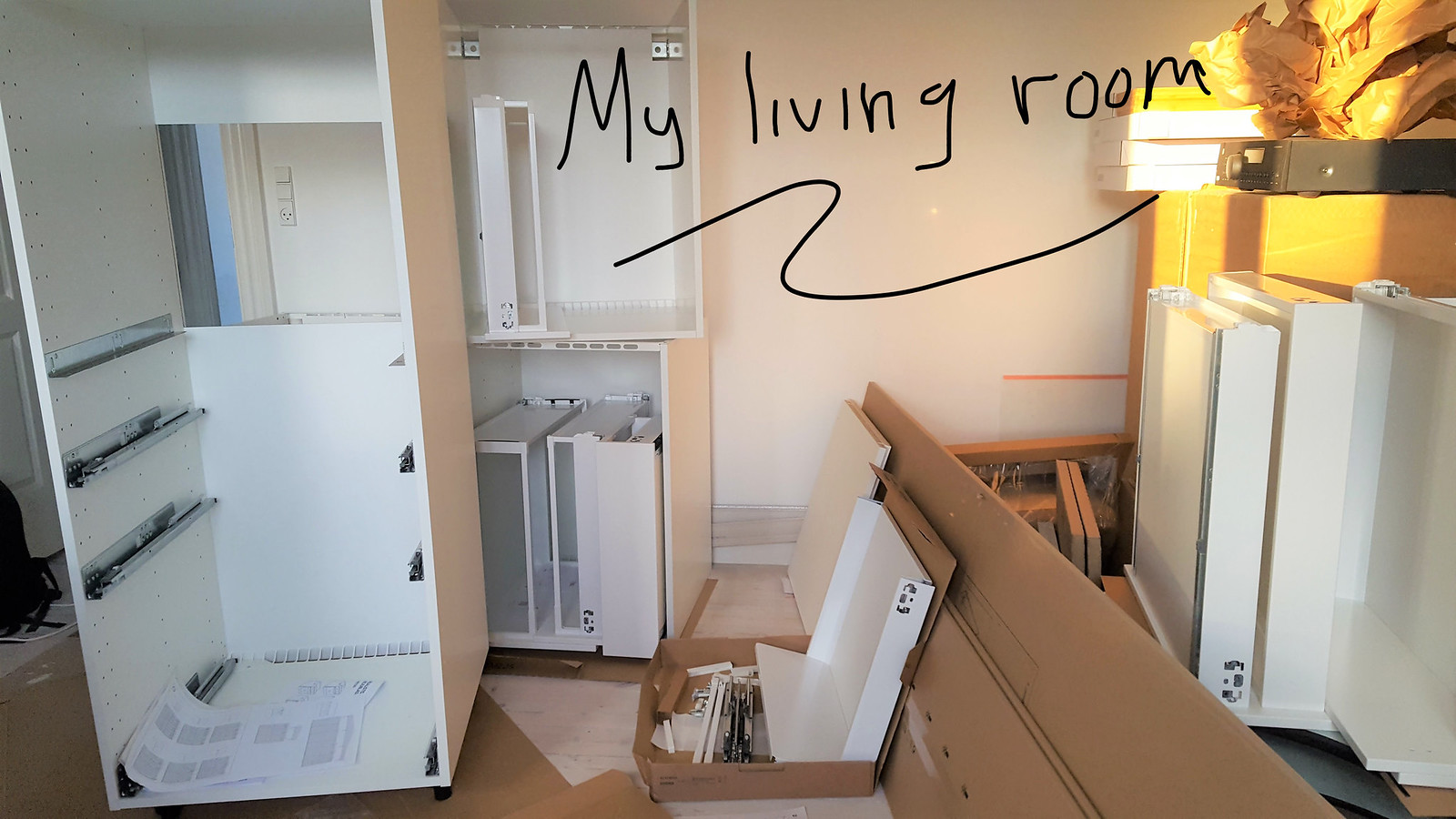

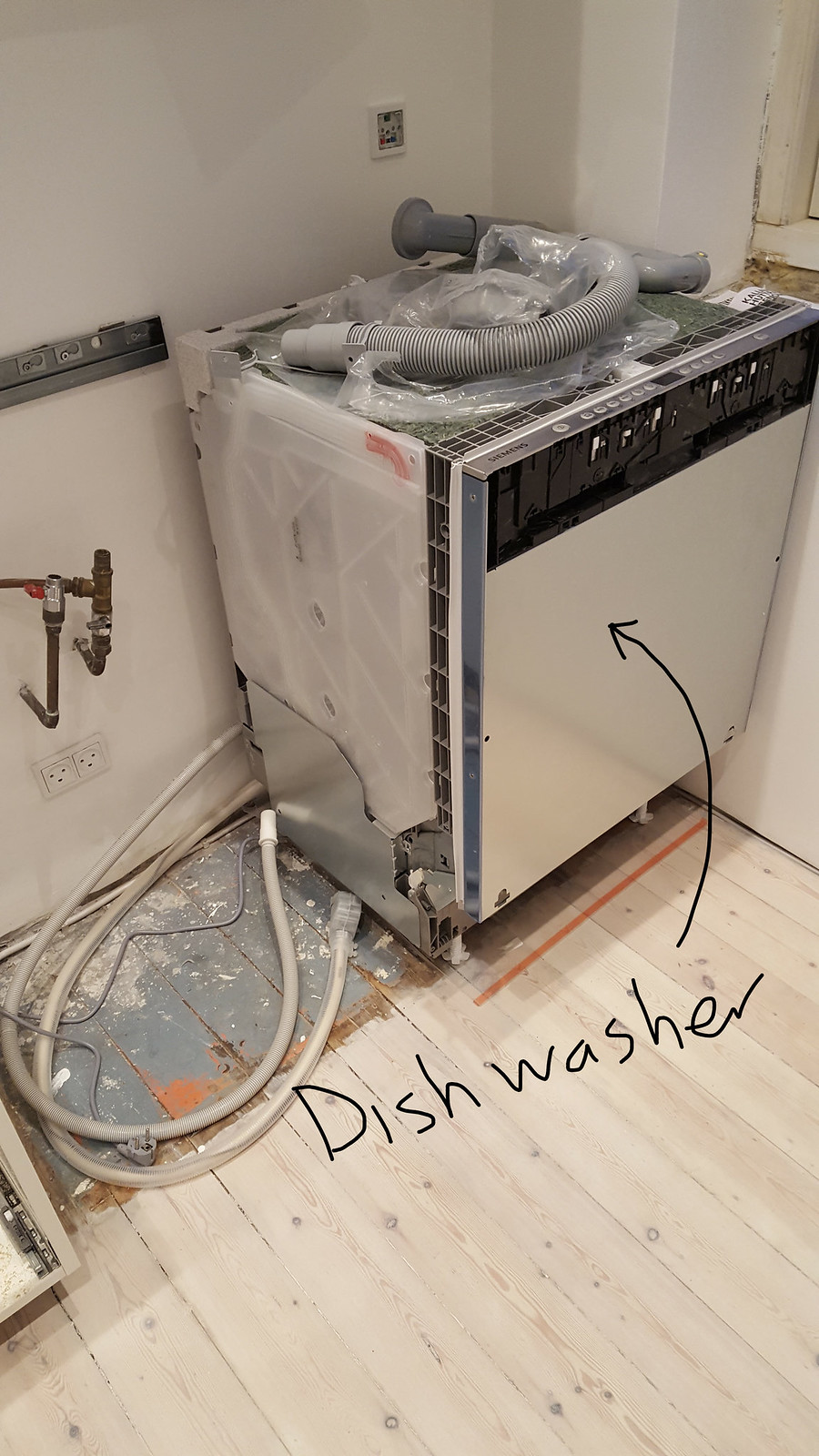
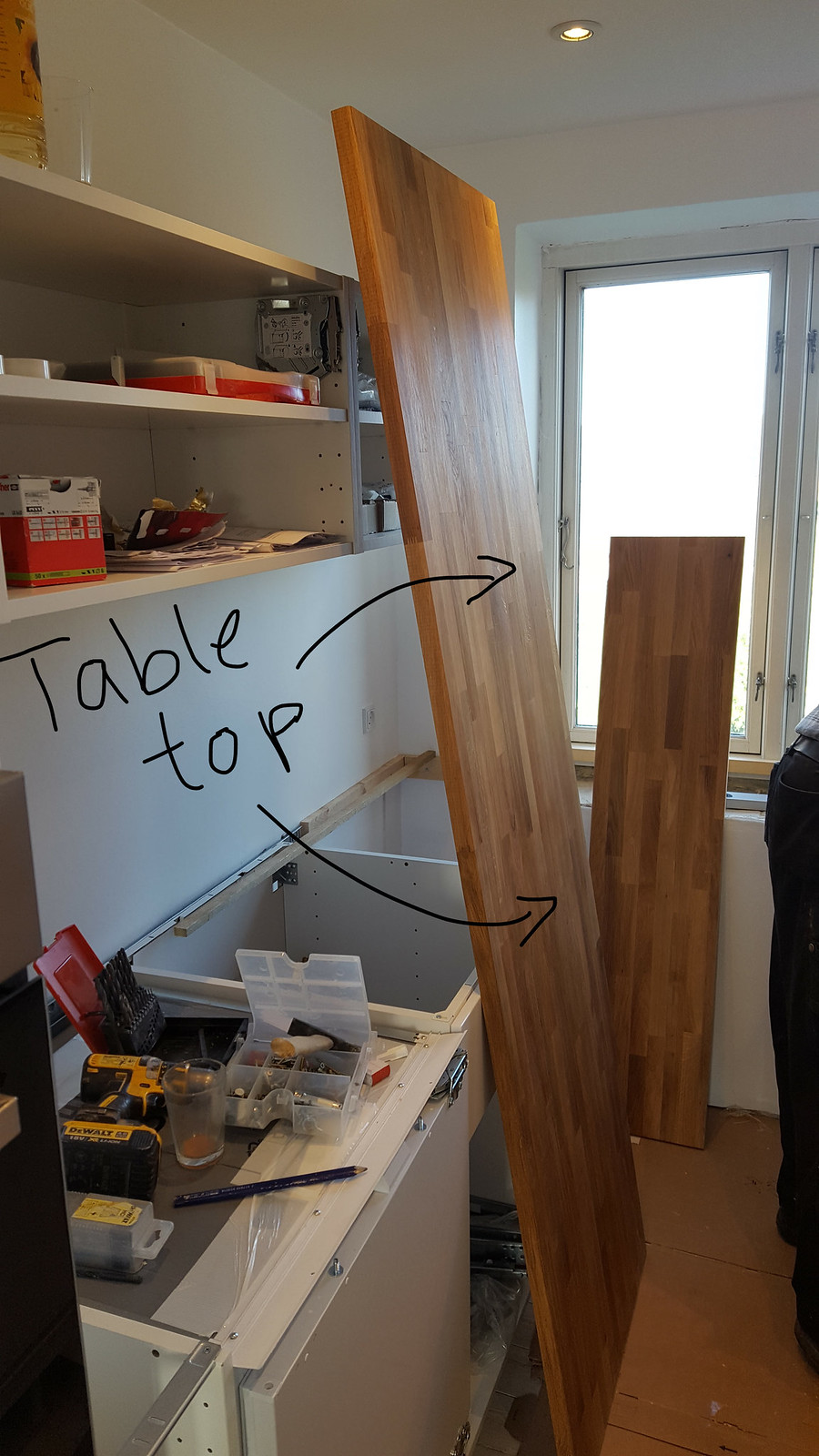







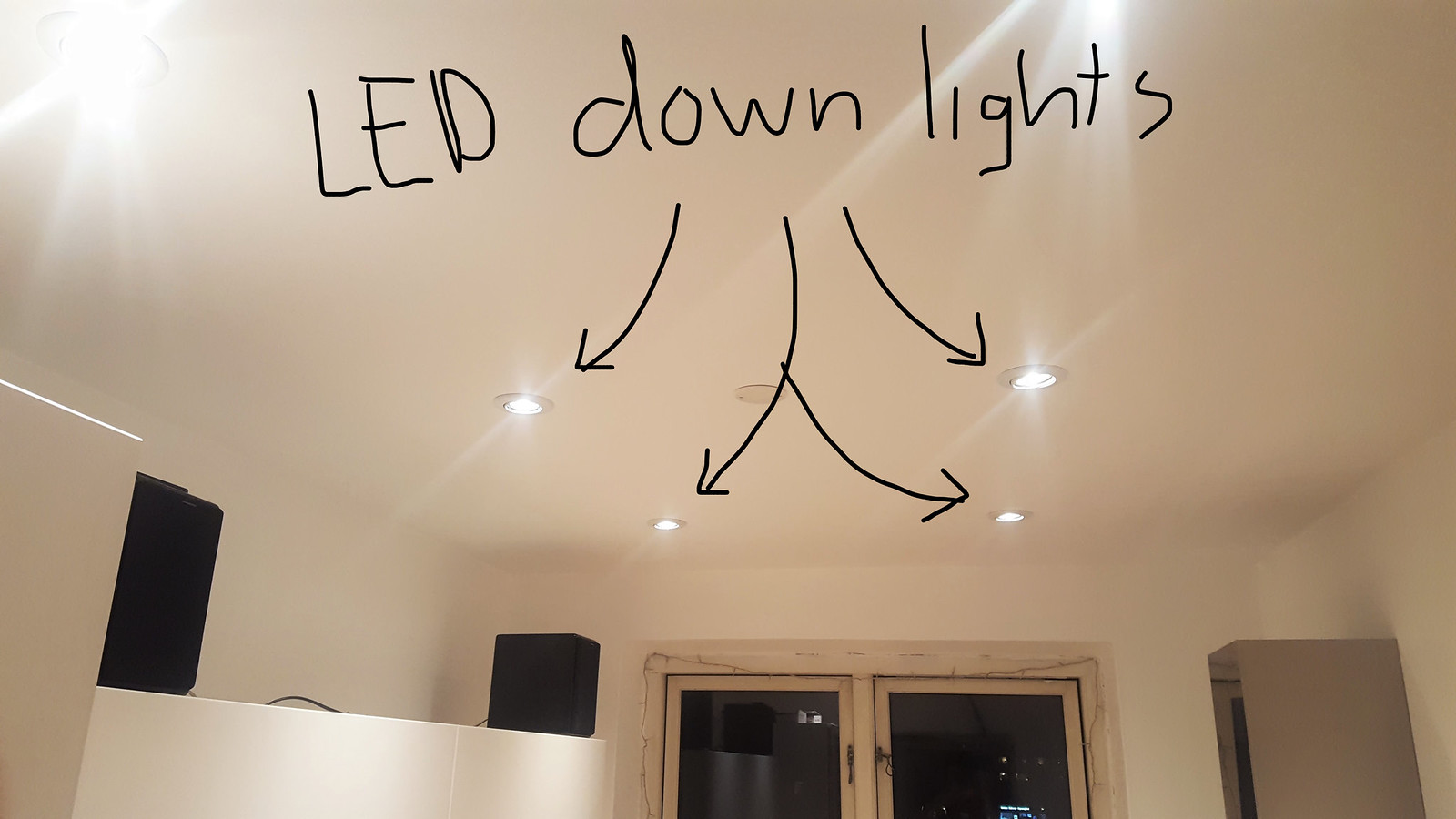

Write me a comment